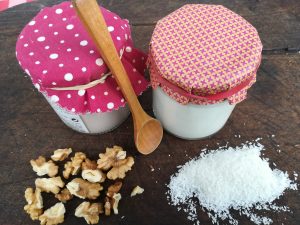
A few years ago, we got to make our first soya yogurt, an actual probiotic one which was just as nutritious as its dairy counterparts. And when we say actual, it’s because there’s no lack of recipes for yogurts which look like the real deal, yet they’ve not gone through the actual fermentation process necessary for them to be qualified as such. Yes, they might be creamy and delicious, but they aren’t quite as nourishing as the probiotic ones.
This task wasn’t an easy one, I’ll give you that. There was a lot of research involved, as well as a ton of experimenting. We used a storebought organic soya yogurt as the ferment, as well as a highly concentrated soya milk.
The first day we got to produce an actual thick yogurt we used no less than 300 grams of white soya to make the milk… That’s three times the amount usually needed! Crazy, right?
Given the amount of requests and enquiries we’ve been having (thanks for the love, by the way!), we decided to experiment with a different kind of seeds and a yogurt-maker borrowed from my friend Ziortza.
Could we make coconut yogurt? Maybe a walnut version? What if I go for sunflower seeds, as they’re much cheaper?
After lots of fail attempts and trials… It’s here! And it’s delicious!
Here are some tips so you can make it happen too!
1- Amount of yogurt: you’ll need to put lots of it in every one of the yogurt-maker jars, about 4-5 spoonfuls… which is more than you usually need to make dairy yogurt (1 spoonful).
2- Highly concentrated milk: it needs to be really dense, so we have to use 250-300 grams of nuts and seeds. Worry not, you have some tips on how to use up the leftovers once the yogurt is made. We wouldn’t want to be wasteful here!
3- Milks made from grains won’t work here, as they’re not rich enough in protein and fats to ferment well. The best seeds and nuts to make homemade yogurt are: fatty nuts (cashews, macadamia nuts, walnuts), coconut, sunflower seeds and soya.
4- Temperature: don’t use cold yogurt as a ferment, it needs to be lukewarm.
It was so exciting to me to be finally able to make my own vegan probiotic yogurt at home, I almost cried of happiness and enjoyed every little bit!
On the downside, we need a lot of nuts/seeds to make these, so here are some tips to make sure you don’t waste any ingredients at all.
You can use them as a second extraction step (explained in another article) when you make plant milks, or keep the pulp to add to other dishes, since it’s really nutritious.
This way we get:
- 5 vegan yogurts of 100ml.
- 1 litre of plant milk
- 300 grams of pulp that you can use in other recipes such as cookies, patés, pasta… You’ll find many recipes in this blog!
Here’s the recipe, let’s give it a go! These amounts use half a litre of plant milk only, so you can start experimenting without being wasteful.
Step 1: how to make the concentrated plant milk
Ingredients:
- 120 grams sunflowe seeds (or 150 grams walnuts/soya or 120 grams of dehydrated coconut)
- 1 litre of hot water (80ºC)
- A pinch of salt
Instructions:
- Fill the Vegan Milker jar with hot water and place the seeds/nuts in the filtering mesh. Now, use your blender to make the milk using the method detailed in our packaging instructions, which most of you are already familiar with.
- As we need to use a high volume of seeds/nuts, we have to divide them into two parts and blend twice so it’s easier.
- If you’re using coconut, this volume will be even higher so you also need to divide the amount into two 60 grams turns, removing the first one before blending the second.
Step 2: yogurt fermentation
Ingredients:
- ½ litre of concentrated milk made in step 1
- 250ml. Organic soya yogurt
Instructions:
- Turn on the yogurt-maker and open the jars
- Fill every jar half-way with yogurt (4-5 spoonfulls), which should be lukewarm to aid the fermentation process.
- Warm plant milk until about 40ºC.
- Mix warm milk and yogurt untul smooth.
- Close the jars with a lid and let them chill in the yogurt maker for 12 hours.
- Let them cool and chill in the fridge.
You’ll see how creamy the yogurt looks after a couple of hours, but if you want it to be even creamier, you can remove the “whey” (not actual whey since it’s vegan) liquid-y part. This can be used to make other drinks or in baking. It’s really healthy too!
The remaining yogurt turns out super creamy and delicious. Such a treat! It will last for up to 5 days in the fridge.
Tips and tricks
Sunflower seeds and nuts make a vegan yogurt which is similar to the storebought version. The coconut one turns out even creamier, although not quite as thick.
You can make the yogurt even thicker by blending a banana with it.
Another easy way to make vegan cheese and yogurt is by using enzymatic water or “rejuvelac”. You’ll find some ideas in the yogurt and cheese section of this blog.
Thanks for your enquiries and questions. It’s all thanks to you that we were able to make such wonderful yogurts!!

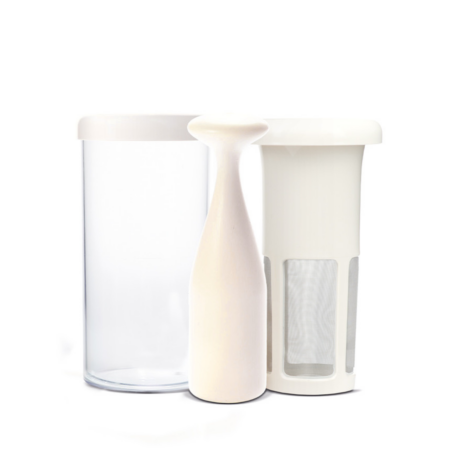
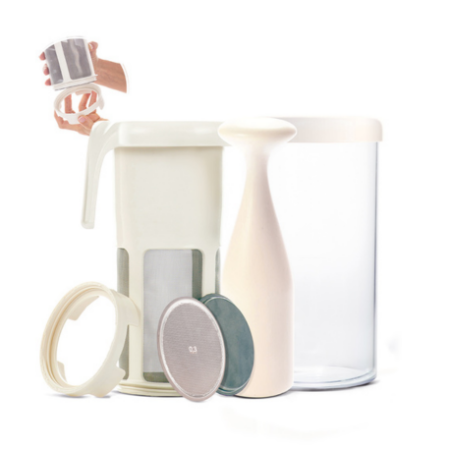
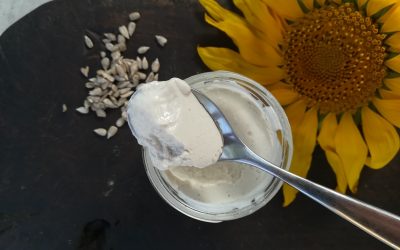
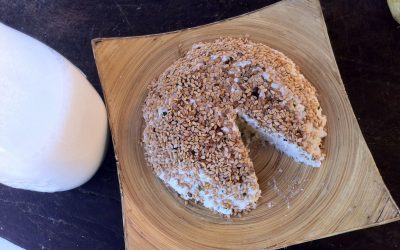
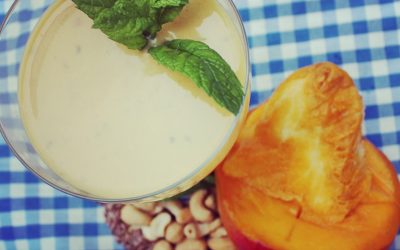
0 Comments